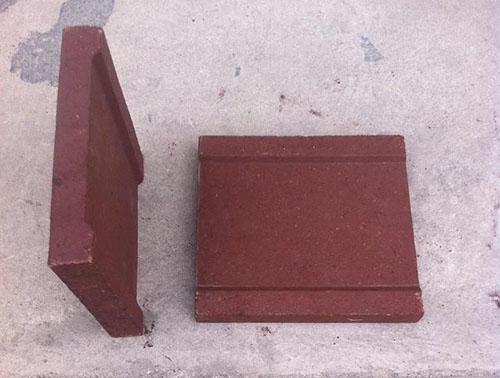Among the common special heat storage brick refractories, the commonly used varieties are mainly the following,
Acidic
Larger quantities are silicon bricks clay bricks. Silica brick is a silicon product containing more than 93% SiO2. The raw materials used are silica, waste silica brick so on. Silicon bricks have strong resistance to acidic slag erosion, but are susceptible to alkaline slag erosion. Its load softening temperature is very high, close to its fire resistance. After repeated calcination, the volume does shrink, even slightly expands, but the thermal shock resistance is poor. Silicon brick is mainly used in coke ovens, glass melting furnaces, acid steelmaking furnaces other thermal equipment. Clay bricks contain 30% to 46% alumina. It uses refractory clay as the main raw material, with a fire resistance of 1580 to 1770 ° C good thermal shock resistance. It belongs to weakly acidic refractory materials, has corrosion resistance to acidic slag, is widely used. It is a class of refractory with large production capacity.
Matters needing attention when adding bricks:
1. Make up bricks must use the same batch of bricks as used bricks;
2. Whenever possible, use the remaining loose bricks that are overhauled with the old bricks (Note: wet damaged bricks are strictly prohibited)

3. The contact surface of new old bricks must be fired with mud;
4. Do punch iron plates between the interface of the old new bricks;
5. The two hole surfaces of the fire block, one side is a flat hole surface the other side is a concave hole surface, a connecting groove is planned on the end face to improve its ventilation performance. In addition, the hole direction of the high-temperature fire block should have a certain angle with the direction of the burner nozzle, in order to prevent the dust in the flue gas directly eroding the heat storage body through the hole of the block.
It is represented by magnesium products. It contains more than 80% to 85% of magnesia, with periclase as the main crystalline phase. The main raw materials for producing magnesia bricks are magnesite, seawater magnesia made magnesium hydroxide extracted seawater calcined at high temperature). Good resistance to alkaline slag iron slag. The melting point of pure magnesia is as high as 2800 ° C. Therefore, the fire resistance of magnesia bricks is higher than that of clay bricks silica bricks. Since the mid 1950s, due to the use of oxygen-blown converter steelmaking the use of alkaline open hearth furnaces, the production of basic refractory materials has gradually increased, while the production of clay bricks silicon bricks has decreased. Alkaline refractories are mainly used in open hearth furnaces, oxygen-blown converters, electric furnaces, non-ferrous metal smelting, some high-temperature thermal equipment.
Welcome to inquire
+86 18640735333
Mobile: +86 18640735333 Mr. Yang
Email: Yangkaiyi0368@163.com
Address: West Outer Ring, Dashiqiao Economic Development Zone, Yingkou, Liaoning Province
